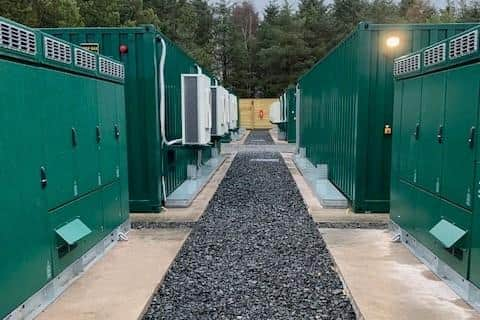Innovative West Lothian battery storage project acquired in £15m-plus deal
Stock market-listed Gresham House Energy Storage Fund said it had completed the purchase of the Byers Brae battery project, located near Wester Dechmont, Livingston, for a total enterprise value of £15.6 million.
Byers Brae is a battery-only site which commenced commercial operations last month. It is expected to generate revenues primarily from asset optimisation – whereby it imports and exports power to earn income from the wholesale market and the National Grid administered balancing mechanism.
Advertisement
Hide AdAdvertisement
Hide AdThe acquisition increases the total capacity of operational utility-scale battery storage projects in the fund’s investment portfolio to 425 megawatts. All of the other facilities are located in England.


Ben Guest, fund manager and head of Gresham House New Energy, said: “Byers Brae adds our first operational capacity in Scotland. Its location makes it well placed to ease system constraints arising from bottlenecks in the physical network between UK wind generation in the north and power demand in the south.
“The facility currently provides system flexibility via National Grid’s dynamic containment premium frequency response product.”
Utility-scale battery storage systems are the enabling infrastructure that will support the continued growth of renewable energy sources such as wind and solar, seen as being essential to the UK’s stated target to reduce carbon emissions.
They store excess energy generated by renewable energy sources and then release that stored energy back into the grid during peak hours when there is increased demand for it.
A message from the Editor:
Thank you for reading this article. We’re more reliant on your support than ever as the shift in consumer habits brought about by coronavirus impacts our advertisers. If you haven’t already, please consider supporting our trusted, fact-checked journalism by taking out a digital subscription: www.scotsman.com/subscriptions
Comments
Want to join the conversation? Please or to comment on this article.